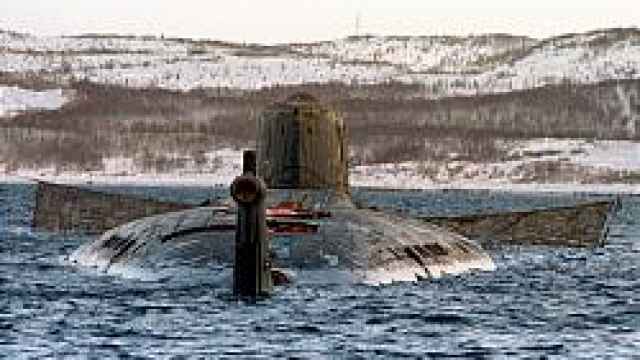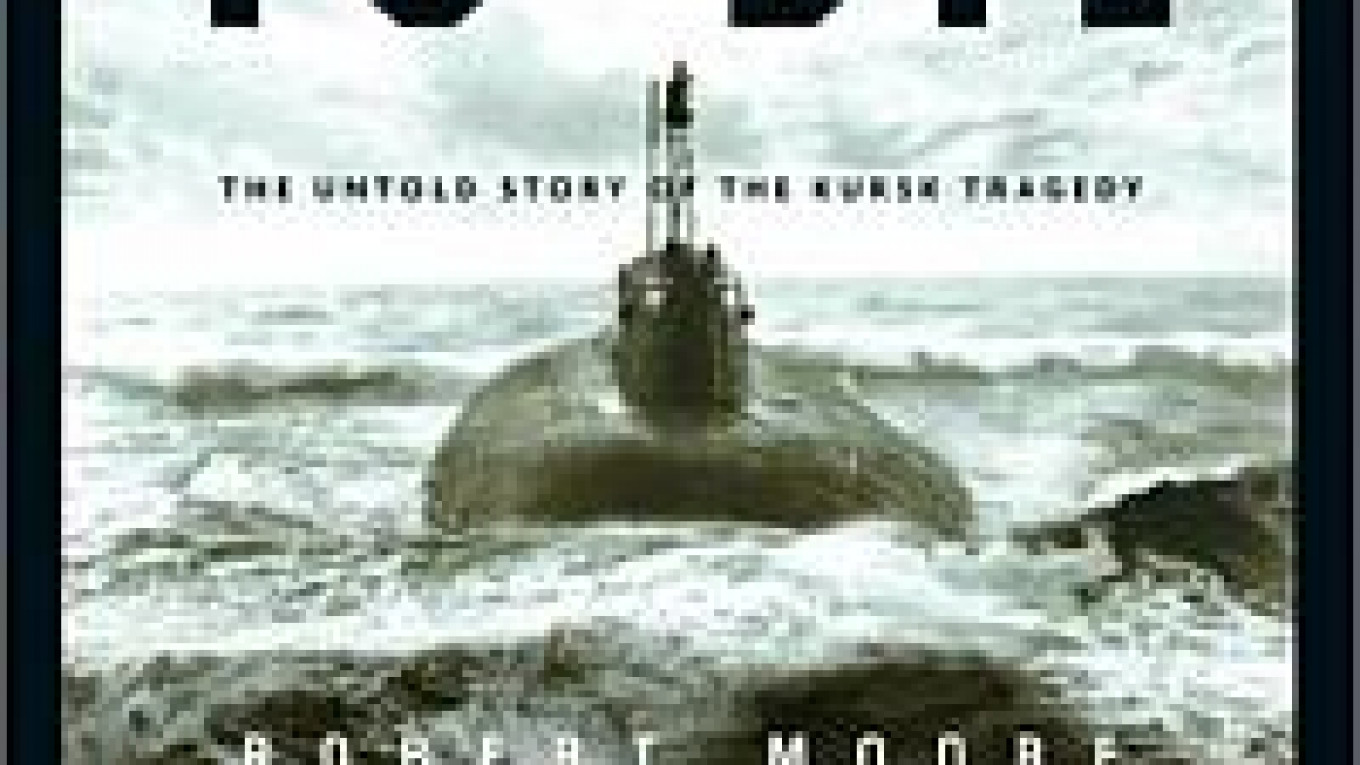But all was not calm. The sub had been loaded with a torpedo that used hydrogen peroxide as fuel. Colorless and odorless, the fuel causes a violent reaction when it comes into contact with such metals as copper, and the reaction gives off intense heat. The 650mm torpedo loaded in tube No. 4 on the Kursk was old, having been manufactured in 1990, before the collapse of the Soviet Union. It had never been launched before.
What happened at 11:28 that morning is not known for certain, but all indications are that the hydrogen peroxide fuel leaked, touched metal and triggered an inferno in the torpedo room. The Kursk was instantly disabled and dove to the sea bottom, and much of the crew perished immediately. Just over two minutes later, the remaining torpedoes exploded, sending out seismic waves that were detected hundreds of kilometers away.
The disaster is a story unto itself -- the most dramatic example yet of frightening deterioration in the former Soviet Union's military machine. Worn-out submarines, aging intercontinental ballistic missiles, decrepit early-warning systems and loose nuclear materials are all part of this legacy of decay. In "A Time to Die," journalist Robert Moore does not probe deeply into the reasons for the Kursk disaster; instead, he chronicles the failed effort to rescue the Kursk survivors. This is an emotion-packed and ultimately heartbreaking story that also sheds light on the Soviet military's decay. The book's title is drawn from a poem one sailor wrote to his wife before the voyage.
Twenty-three men in the aft compartments of the submarine survived the explosion and sinking, according to notes they left behind. It is not known how long they were alive, but they huddled in the rear of the vessel and did not try to escape the doomed sub, which suggests that they were waiting to be rescued. Moore, who is based in Washington as chief United States correspondent for Britain's ITN News, shows how the Russians badly bungled the emergency and how British and Norwegian teams struggled to assist them when the Russians belatedly sought international help.
As the shock waves of the Kursk explosion pulsed through the Barents Sea, they were monitored by another Russian submarine, the Karelia. In the first of many astounding miscalculations, its captain decided not to report what he had heard, figuring the explosion was just part of the exercise. The Peter the Great warship, the ostensible target of the Kursk practice torpedo, also detected the shock waves. A report was sent to the navy brass, but they ignored it.
 Itar-Tass / AP Rather than seeking an explanation for the Kursk's sinking, Moore focuses on subsequent unsuccessful attempts to rescue the 23 sailors who survived the initial explosion. | |
Moore, relying on the British and Norwegian experts who joined the rescue operation, provides a vivid account of the last desperate efforts to open the hatch. At one point, foreign divers were struggling to open a key valve that would indicate whether there was still air behind the hatch. Russian experts at the surface insisted that the valve must be opened counter-clockwise, and they said it would break if turned the other way. The valve didn't budge. After much debate, the divers tried turning it clockwise -- and the valve moved. The Russians were wrong about a simple valve on one of their most technologically advanced ships. Precious hours had been lost. When the hatch was opened, it was too late. There were no survivors among the 118 on board.
Moore's narration is fast-paced, but he disappoints on sources and offers no footnotes. With few exceptions, he does not indicate to the reader what information came from his own interviews and research and what was taken from other sources. Overall, however, his findings parallel those of the official investigation, which was closed last summer.
Though Moore lightly sketches the role of President Vladimir Putin, who was acutely embarrassed by criticism of his slow initial reaction to the disaster, he does not delve more deeply into the disaster's implications for contemporary Russia. The tragedy was a telling example of how the Soviet legacy still lingers. The Kursk families and the Russian people were repeatedly misled by the authorities, in true Soviet-era fashion. In the absence of a strong civil society, Russian leaders still assume they don't have to communicate with the people they govern. Until they do, the most important lessons of the Kursk disaster will not have been learned.
David E. Hoffman is foreign editor of The Washington Post.
"A Time to Die: The Untold Story of the Kursk Tragedy." By Robert Moore. Crown. 271 pp. $25.
A Message from The Moscow Times:
Dear readers,
We are facing unprecedented challenges. Russia's Prosecutor General's Office has designated The Moscow Times as an "undesirable" organization, criminalizing our work and putting our staff at risk of prosecution. This follows our earlier unjust labeling as a "foreign agent."
These actions are direct attempts to silence independent journalism in Russia. The authorities claim our work "discredits the decisions of the Russian leadership." We see things differently: we strive to provide accurate, unbiased reporting on Russia.
We, the journalists of The Moscow Times, refuse to be silenced. But to continue our work, we need your help.
Your support, no matter how small, makes a world of difference. If you can, please support us monthly starting from just $2. It's quick to set up, and every contribution makes a significant impact.
By supporting The Moscow Times, you're defending open, independent journalism in the face of repression. Thank you for standing with us.
Remind me later.


